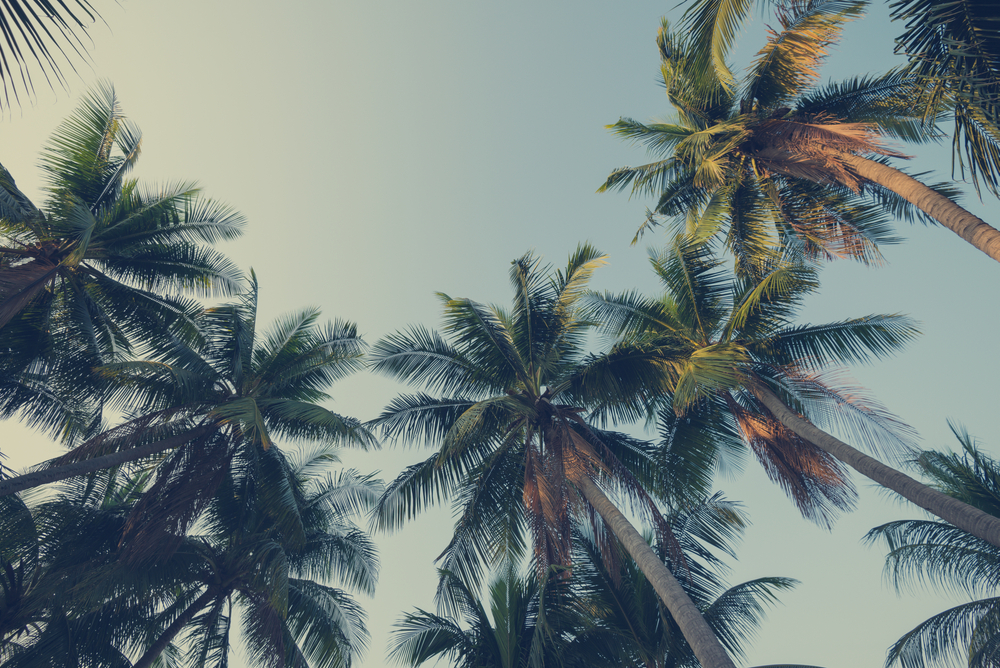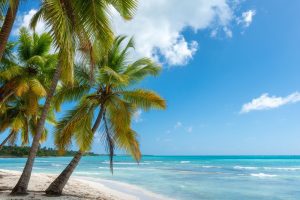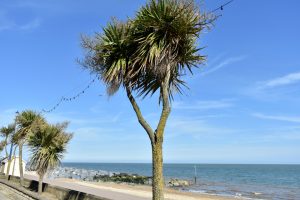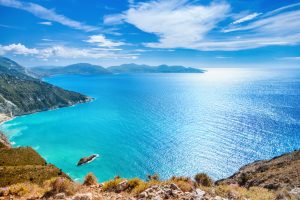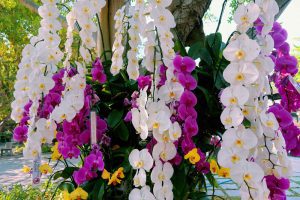When you think of Hawaii, you probably see a series of tropical islands with white sandy beaches and towering palm trees everywhere you look.
But did you know that there are many different types of palm trees and subspecies?
Even more interesting is the fact that although Hawaii has weather that is preferable for palms, almost all of the palms you’ll find were transported from other countries.
In actuality, there are only a couple of palm trees that are native to the state with the most common being the Loulu Palms.
Just about every other you see has been introduced over the last couple of hundred years from places like Australia, Indonesia, and Malesia.
Regardless of their origin, the different types of palm trees you’ll find here are strikingly beautiful in their own way and thrive in the tropical environment.
Check out this list of the twelve different types of palm trees in Hawaii so you can be on the lookout during your next trip to this breathtaking state.
Table of Contents
1. Areca Palm
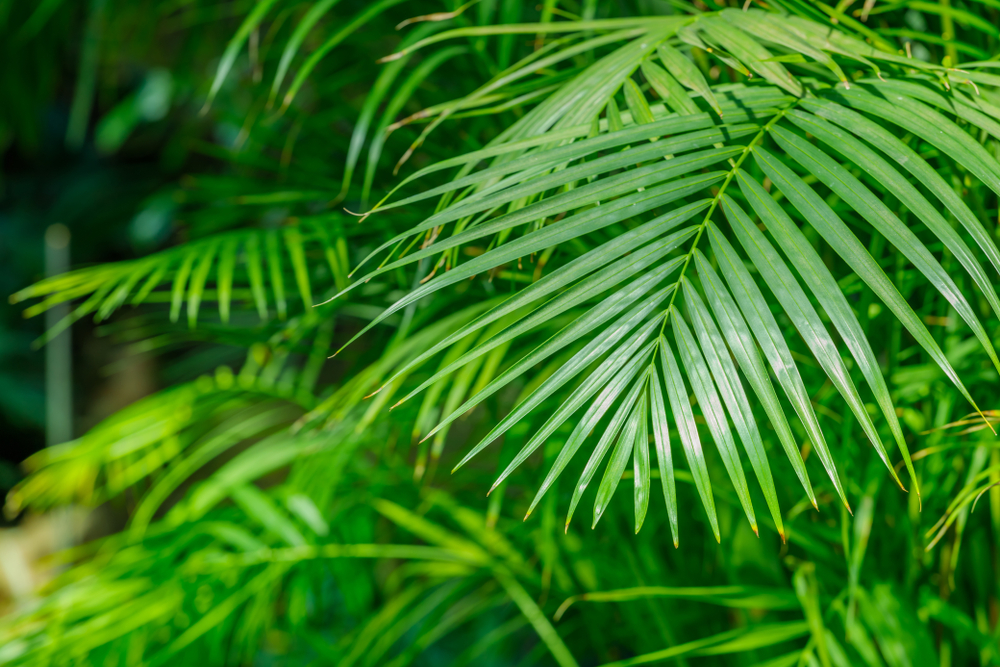
Also referred to as Bamboo Palm and Golden Cane Palm, the Areca Palm is one of the most common types of palm in Hawaii and they help to create the feeling of a tropical paradise.
- The Areca Palm spends much of its teens years low to the ground like a bush but by the time it reaches adulthood it can span out to about 10 feet in width and up to forty feet tall.
- This particular palm grows in a cluster of multiple skinny palm trees all in one and the trunks give off the appearance of bamboo. The cluster can range anywhere from a handful to a dozen depending on the climate, so expect to see a wide-spreading Areca Palm in Hawaii where the temperature is always tropical.
- Leaves of the Areca Palm are dominantly a bright green color with spots of yellow and they spread out in thin sections creating a “V” shaped design.
- Interestingly enough, the Areca Palm is native to Madagascar but was brought over to Hawaii hundreds of years ago, where it has flourished thanks to the similar environment.
2. Wodyetia
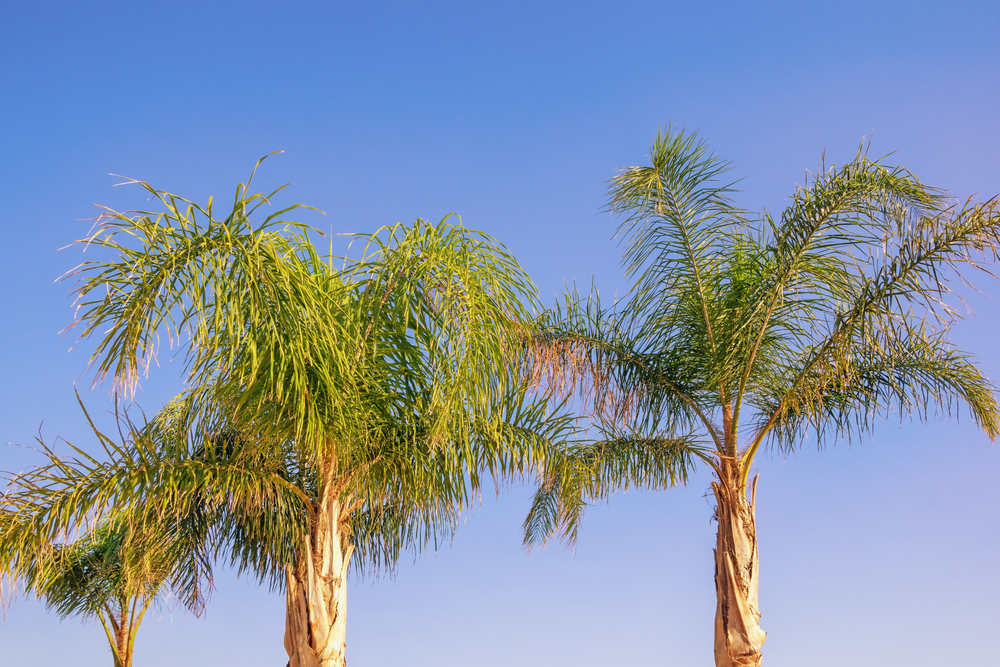
Nicknamed the “Foxtail Palm”, Wodyetia gets its nickname because of its extremely fluffy palm leaves that resemble the tail of its adorable namesake.
- Wodyetia is originally from the eastern part of Australia but has made its way over to Hawaii and has been impressing visitors ever since.
- The trunks of the Wodyetia are on the thinner side but they can get pretty tall depending on the area with an average height of about 25 feet.
- The Wodyetia palm is a unique type of palm that has both male and female characteristics, so you’ll notice that every plant has viable seeds and pollen.
- As the seasons change you can spot the palm’s vibrant colored flowers that eventually give way to bright orange fruit.
- The palm has become more and more popular over the years thanks to its low maintenance, so you’ll be sure to see these beautiful palms wherever you go in Hawaii.
3. Fishtail Palm
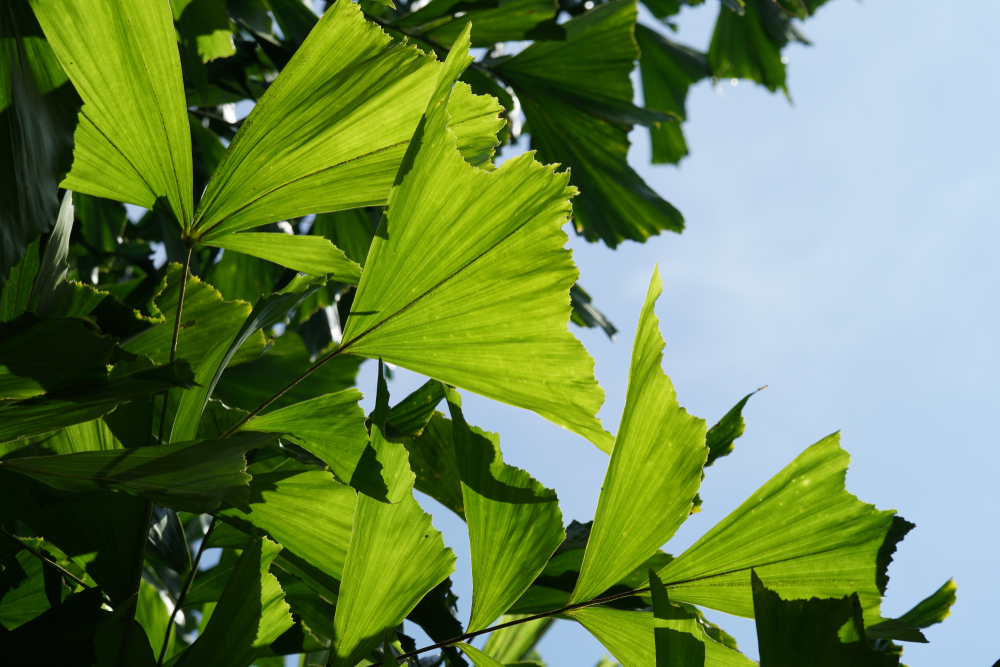
The true name for the Fishtail Palm is Caryotas, but Fishtail is an easier way to remember these unique palms because of their striking leaves.
- This particular palm has a wilder look than most palm trees in Hawaii and is most commonly found in the tropical forests that surround the bustling cities.
- There are a variety of different subspecies when it comes to the Caryota, but one thing remains the same: they’re a magnificent sight to see.
- The Fishtail Palm combines a variety of common palm leaf shapes which makes it look like a hybrid of sorts.
- Keep in mind that after the palm experiences its flowering season, it may lose its appeal for some time, as much of the stem dies along with it.
4. Red Sealing Wax Palm
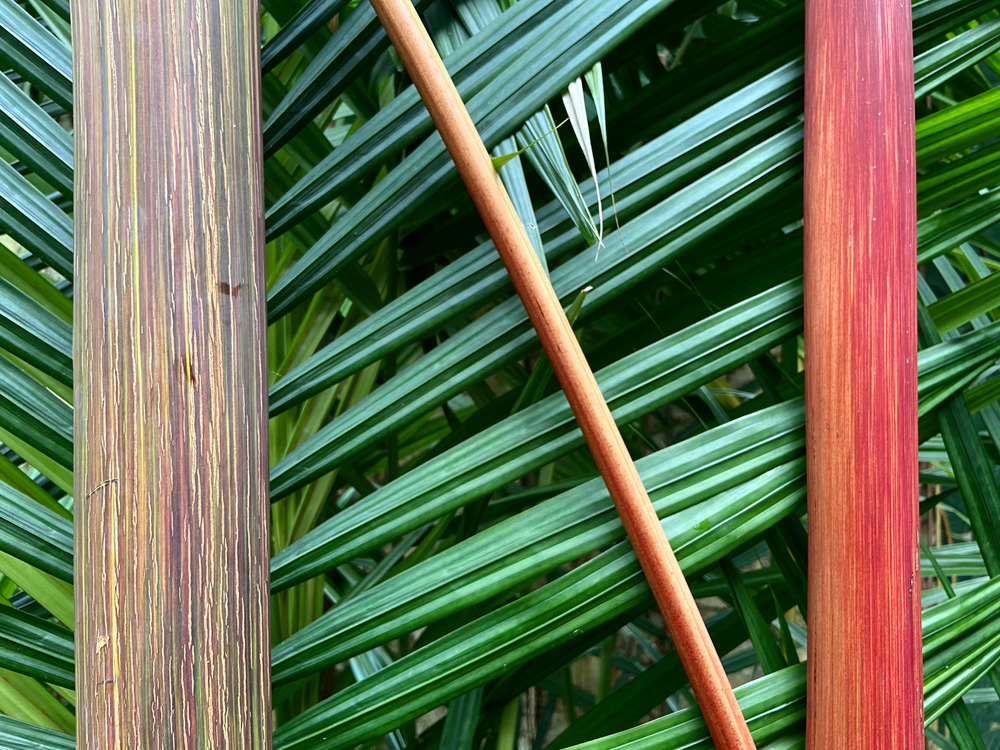
The Lipstick Palm actually originated in Thailand but was easily transitioned into Hawaii living thanks to the similar climate.
- Its most commonly used nickname is the “Lipstick Palm” because of the bright red color of its trunk and fronds that make this unique species of palm stands out amongst the crowd.
- Because of this unusual characteristic, the Red Sealing Wax Palm is considered to be one of the most exotic palms in the world.
- They’re easy to come by in the state of Hawaii so keep your eyes out for the vibrant red color poking out amongst the bright green leaves.
- You’ll most likely find these palm trees complimenting the yards of residential homes and local establishments, as they’re the most popular decoration palm in the state.
5. MacArthur Palm
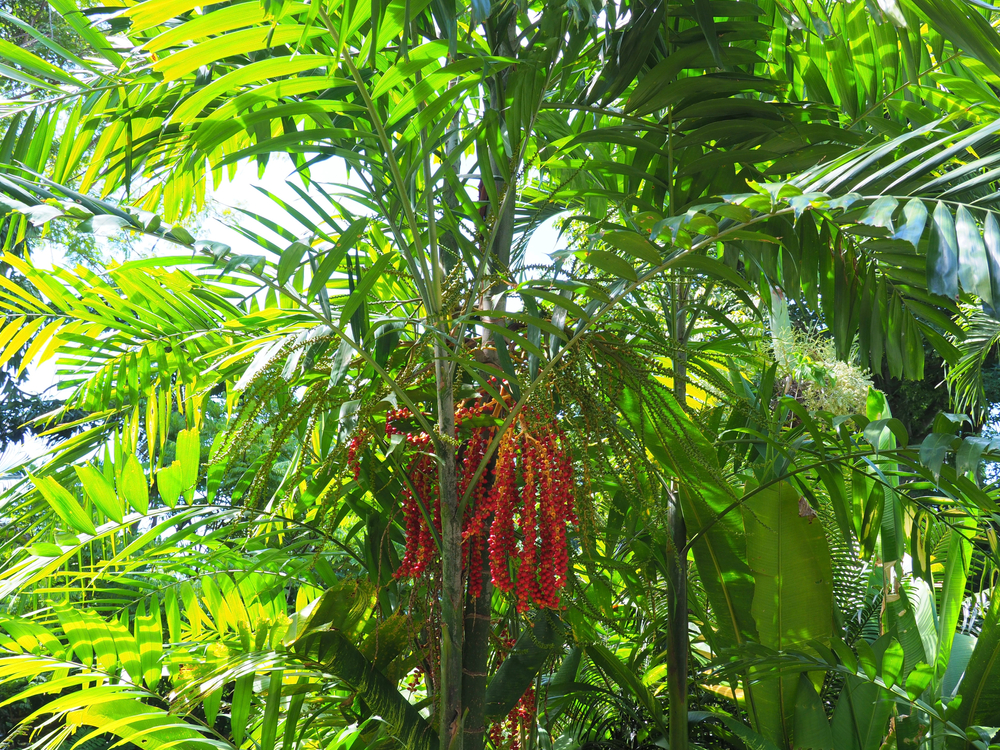
When it comes to palm trees, the MacArthur Palm is considered to be one of the smaller of the bunch with its thin trunks and short height.
Although it’s not one of the most common palm trees in Hawaii, those who do get a chance to see a MacArthur Palm will be impressed with its petite size and beautiful palm leaves.
- To be fair, the MacArthur Palm has a recorded max height of up to 30 feet – but most palms of this kind never pass a height of 15 feet.
- Its skinny grey trunks lead up to two different sets of leaves, with flowers that grow nearly two feet lower than the wide sweeping palm leaves overhead.
- When these palms bloom, they’re transformed from white flowers to vibrant red fruits that bring this beautiful tree to life.
6. Dwarf Date Palm
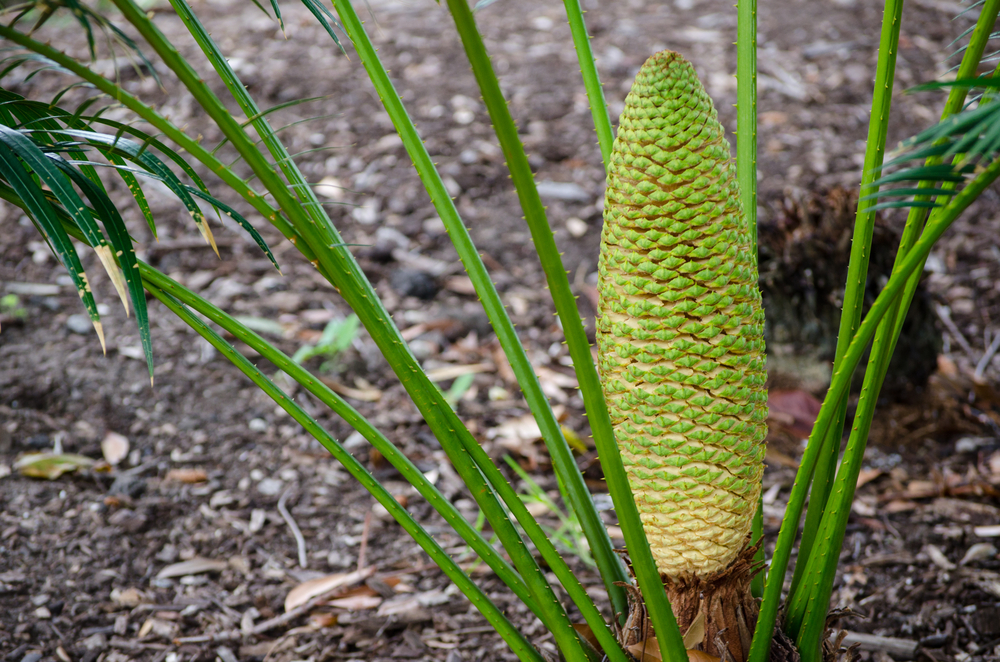
Speaking of small palms, the Dwarf Date Palm definitely falls into that category, with an average height of six feet and a width of five feet.
- This isn’t the type of palm you’ll find in Hawaii’s tropical forest, rather the palm that’ll be planted in front of homes and around luxury communities to add to the appeal of the neighborhood.
- You may even find this small palm within hotels and restaurants as it manages well both indoors and outdoors.
- While the trunk of this palm may be short and slim, the leaves that grow overhead create a canopy of green unlike anything you’ve seen before.
- Every once in a while you’ll come across a Dwarf Date Palm that has developed more than one trunk, so keep your eye out for small differences.
- Although you’ll find yellow flowers on both the female and male palms, the females will also grow clusters of fruit that fade from red to black throughout the season.
7. Loulu Palm
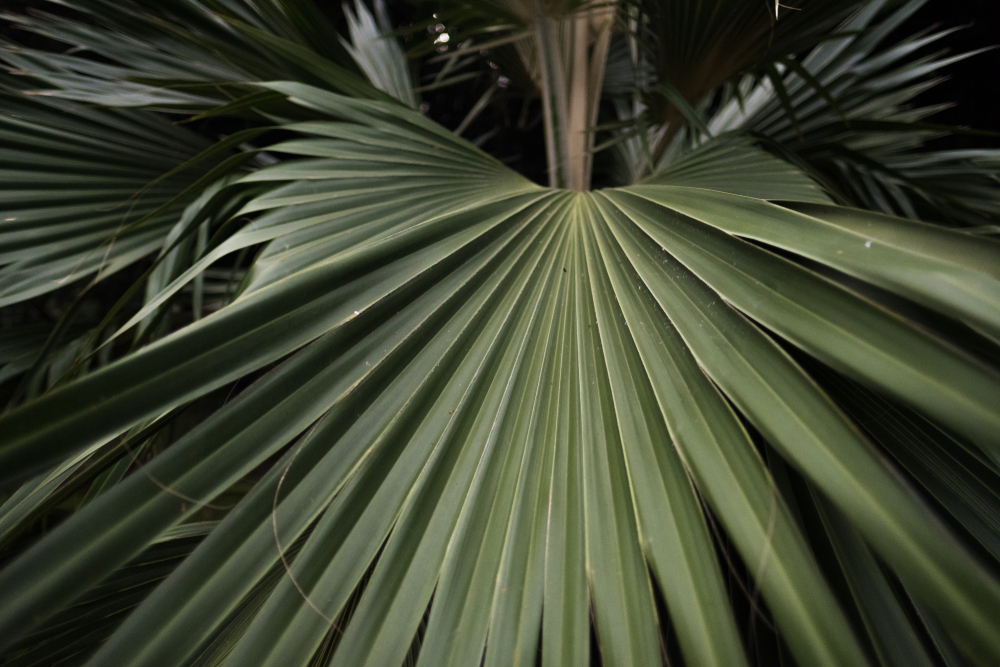
One of the few palms that are actually native to Hawaii, these giant palms can grow as tall as sixty feet and have massive, wide-sweeping leaves that add to their impressive stature.
- It is important to note that there are a large variety of different subspecies, so the height, leaves, and fruit can vary depending on your location. For example, in Moloka’i, you’ll find a subspecies known as Pritchardia Hillebrandii, which averages a height of about twenty feet with circular, blue fruit come blooming season.
- Because this palm is native to the land, you’ll find it all throughout the state from its tropical forests to its high cliffs and everything in between.
8. Coconut Palm
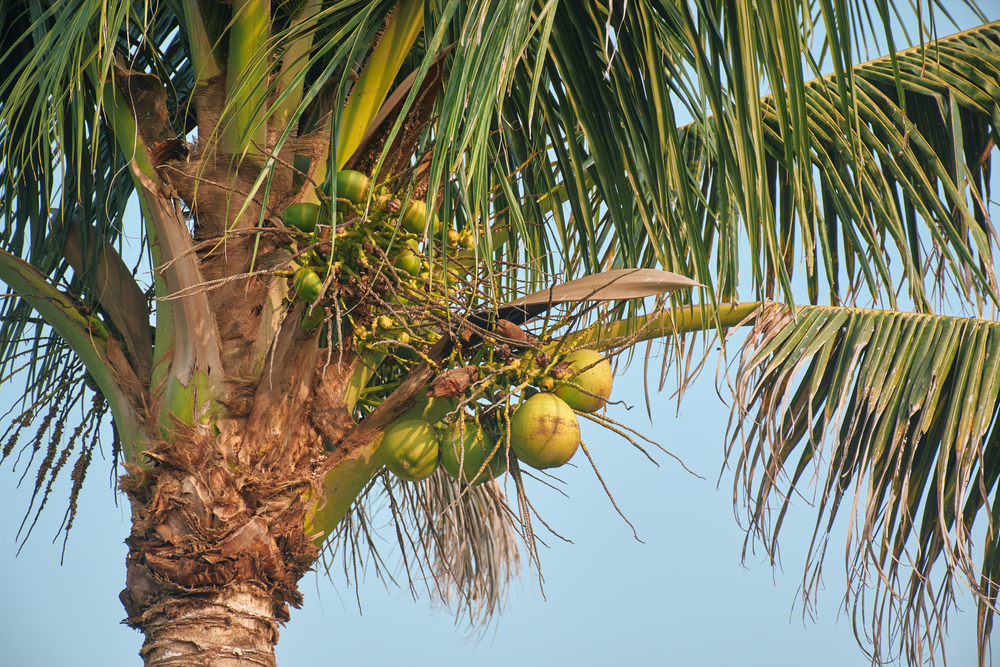
A Coconut Palm is most commonly known for its year-round growth of… you guessed it… coconuts.
- Native to areas like Malesia and Australia, the Coconut Palm has made its way over to Hawaii and thrives in its tropical environment primarily along the coast.
- You’ll spot these giant palms from miles away as they can grow as tall as one hundred feet and stretch out as wide as ten feet.
- Nestled around the clusters of coconuts that grow upon this palm is a thick husk like material that holds the fruit in place while the large green palm leaves provide cover from the sun.
- The trunks of these palms are extremely thick to support such a giant tree and its continuous growth of heavy coconuts. With that in mind, be careful not to spend too much time under one of these palm trees, as ripened coconuts can fall and cause serious damage from such great heights.
- It’s considered to be the number one type of pa tree in the state – so when you find yourself soaking in the sun from one of Hawaii’s many beaches, make sure to look up at the palms that surround you.
9. Travelers Palm
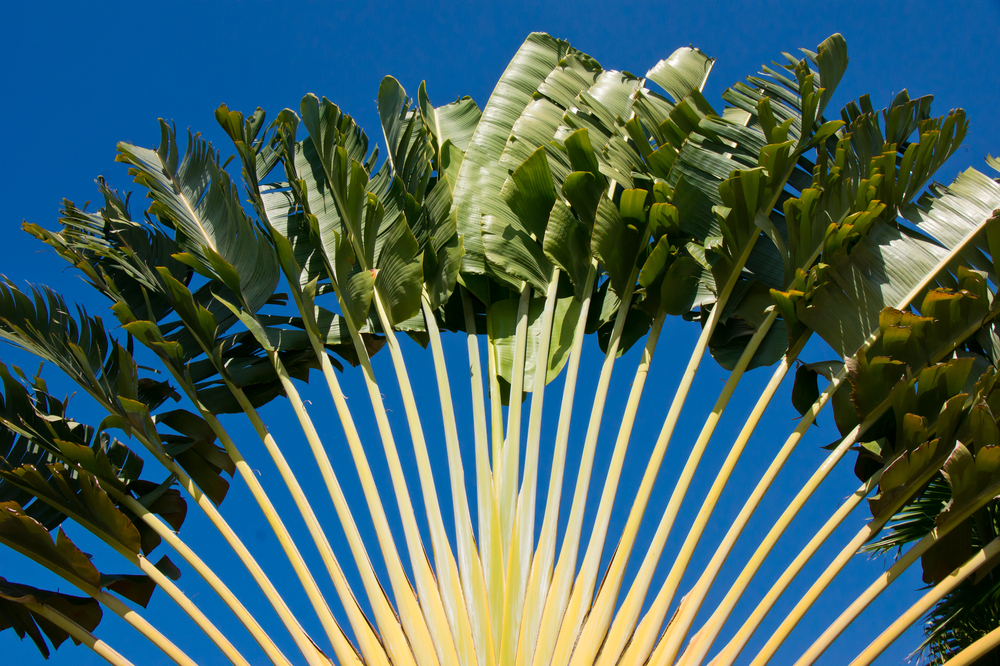
Although not technically a species of palm, the Travelers Palm has an uncanny resemblance to Hawaiian palms – and you’d never be able to tell the difference unless someone told you otherwise.
- The Travelers Palm is a beautiful sight, with its wide spreading palms that look oddly similar to the tail of a peacock.
- The cluster of stems that jutt out from the ground create a large “V” formation with large fan-like leaves that overlap one another.
- It takes a pretty long time for an actual trunk to develop, but when it does, it can grow to massive heights and create a truly breathtaking sight.
- Rumor has it that the palm also holds magical properties – and that those who stand in front should make a wish to better their future.
10. Bottle Palm
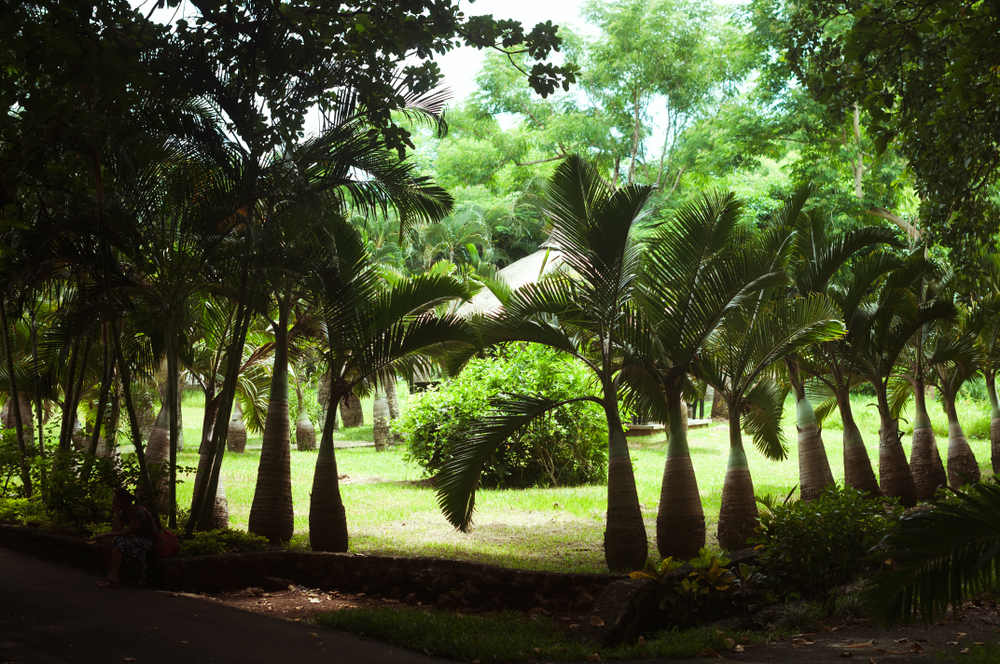
You’ll notice that most palms develop names based on their appearance, and the Bottle Palm is no exception with its unique trunk shape.
- Although these types of palms take a very long time to mature, a grown Bottle Palm is common in Hawaii and is used to accent many neighborhoods.
- The trunk not only takes on the shape of a bottle but is also extremely thick, and the crown of leaves that hang over it can make it look like a potted plant.
- Occasionally you’ll spot a Bottle Palm with 2-3 trunks, which makes for a pretty interesting sight considering how large a singular trunk is on its own.
- Contrary to popular belief, these massive trunks aren’t used to store water and have no direct purpose aside from appealing to the eyes.
11. Bismarck Palm
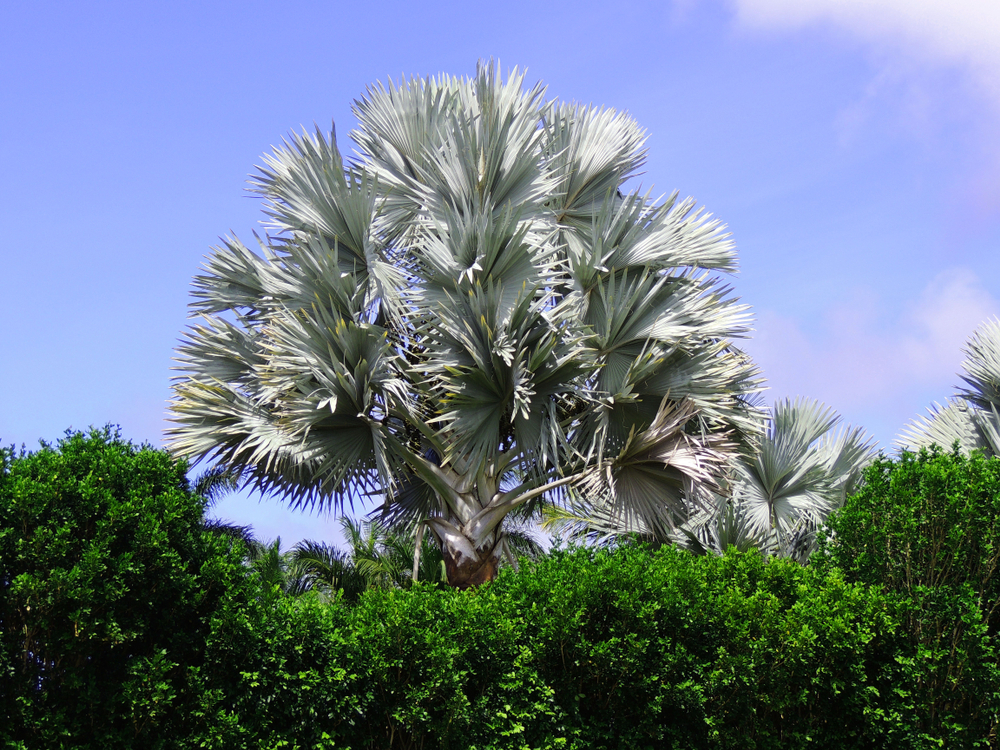
Native to both the northern and western regions of Madagascar, the Bismarck Palm makes a beautiful addition to Hawaii’s many thriving types of introduced palm trees.
- One of the newer additions to Hawaii’s collection, the Bismarck Palm is known for its striking, silver-blue fan-like palm leaves.
- This particular palm features unique characteristics compared to other palms in its family which add to its growing appeal.
- The trunk of the Bismarck Palm is singular but can get as wide as two feet and as tall as sixty feet if given enough time and space to grow.
- The palm averages at about thirty leaves per plant with an upward arch that provides an easy view of its silver undertones.
12. Manila Palm
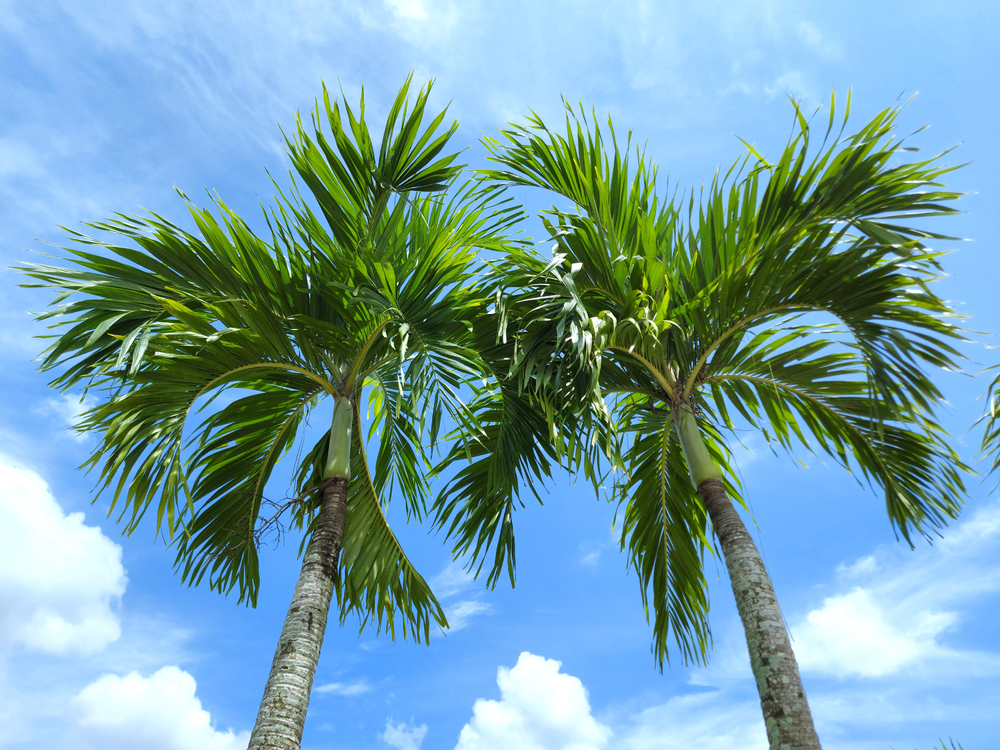
The Manila Palm has developed quite a few nicknames over the years, but the most popular name has got to be the “Christmas Tree Palm”.
- In reference to its catch nickname, the Christmas Tree Palm gets its name from the seasonal change of its colorful fruit from bright green to a shade of red during the month of December.
- The growth of this palm starts off at a rapid pace, but once it reaches about six feet, the growth slows tremendously until it reaches its max height of 25 feet.
- Although the palm is not native to Hawaii, it has easily adapted to its tropical environment and can most commonly be seen bordering busy streets and in residential areas.
- You’ll notice that the base of the trunk is much thicker than the rest and creates a unique appearance unlike many of the other palms you’ll find in the area.

